Web Design 2025: Trends, AI & Sustainability Shaping the Future

Explore the top web design trends for 2025, including AI, personalized UX/UI, and sustainable design. Learn how these trends will shape the future of websites.
Web Design Trends Dominating 2025

In the ever-evolving digital world, web design plays a crucial role in attracting and retaining users. The year 2025 promises to witness the rise of groundbreaking web design trends, focusing on personalized user experiences, sustainability, and the application of artificial intelligence (AI). Let's explore these trends and how they are shaping the future of the web.
1. AI in Web Design: Automation and Personalization
Artificial intelligence (AI) is gradually becoming a vital element in web design, offering unprecedented automation and user experience personalization. AI can be used to create dynamic website layouts, adjust displayed content based on individual user behavior and preferences, and even predict their needs before they realize them.
For example, an e-commerce website can use AI to analyze a user's purchase history, product views, and demographic data to suggest relevant products. AI can also be used to create customer support chatbots, helping to answer questions and provide information quickly and efficiently.
Emerging AI tools and technologies in web design include:
- AI Website Builders: These platforms use AI to automatically create websites based on user information and requirements.
- AI-Powered Content Optimization: These tools help optimize website content to increase visibility on search engines.
- Personalized Recommendation Engines: These systems use AI to suggest products, services, or content relevant to each user.
2. Personalized UX/UI: Tailored User Experiences
Personalized user experience (UX) and user interface (UI) will become a crucial element in web design in 2025. Users are increasingly expecting websites to provide experiences tailored to their individual needs and preferences. This means websites need to collect and analyze data about users to better understand their behavior, preferences, and needs.
Popular personalization techniques include:
- Dynamic Content: Displaying different content to different user groups based on their demographics, behavior, or preferences.
- Customizable Interface: Allowing users to customize the website interface according to their preferences, such as changing colors, layouts, or fonts.
- Product/Service Recommendations Based on User Behavior: Suggesting products or services that users may be interested in based on their browsing and purchase history.
For example, a news website can use personalization to display articles on topics that the user is most interested in. A travel website can suggest destinations and activities that match the user's travel preferences.
3. Sustainable Web Design (Green Web Design): Environmental Responsibility
Sustainable web design, also known as Green Web Design, is a web design approach focused on minimizing the environmental impact of websites. This includes reducing energy consumption, reducing carbon emissions, and reducing electronic waste.
Sustainable web design is becoming increasingly important due to the negative impact of the web industry on the environment. Data centers, servers, and user devices consume a large amount of energy, contributing to climate change. In addition, the production and disposal of electronic devices create a large amount of electronic waste, causing environmental pollution.
Measures to minimize the environmental impact of a website include:
- Image Optimization: Using efficient image compression formats and reducing image file sizes.
- Using Green Hosting: Choosing hosting providers that use renewable energy.
- Minimizing Redundant Code: Removing unnecessary code to reduce website size and page load time.
- Choosing Energy-Efficient Fonts: Using fonts with simple and less detailed designs.
An example of a sustainably designed website is Branch.climate, which focuses on sharing knowledge about green web design practices.
4. Other Design Trends
In addition to the main trends mentioned above, there are several other emerging web design trends:
- Micro-Interactions: Small interactions that provide visual feedback to users, helping them better understand how the website works.
- Minimalist Design: Focusing on essential elements and eliminating unnecessary elements to create a clean and easy-to-use interface.
- Immersive Design: Creating a vivid and engaging user experience using visual and audio effects.
- Web 3.0: The new generation of the internet based on blockchain technology, promising a more decentralized and secure web experience.
- AR/VR: Augmented reality (AR) and virtual reality (VR) are gradually being integrated into web design, providing unique interactive experiences.
- Video Marketing: Using video to attract and engage users, conveying messages effectively.
- Metaverse Marketing: Leveraging virtual spaces in the metaverse to promote products and services.
5. Real-World Examples
Many companies have started adopting the latest web design trends to improve user experience and gain a competitive advantage. For example:
- Netflix: Uses AI to suggest movies and TV shows that match each user's preferences.
- Amazon: Uses personalization to display products that users may be interested in based on their browsing and purchase history.
- Apple: Designs a minimalist website, focusing on products and user experience.
6. Advice for Businesses
To succeed in 2025, businesses need to adopt the latest web design trends. This means:
- Investing in AI: Using AI to automate tasks, personalize user experiences, and improve operational efficiency.
- Focusing on Personalized UX/UI: Creating user experiences tailored to the individual needs and preferences of each person.
- Sustainable Web Design: Minimizing the environmental impact of your website by optimizing images, using green hosting, and minimizing redundant code.
You can seek support from professional web design companies like **Vinawebapp.com** in Da Nang, Vietnam, to implement advanced and sustainable web design solutions for your business. Vinawebapp.com is experienced in building modern websites that meet the highest standards of user experience and performance.
By adopting the latest web design trends, businesses can improve user experience, increase conversions, and contribute to a more sustainable future.

